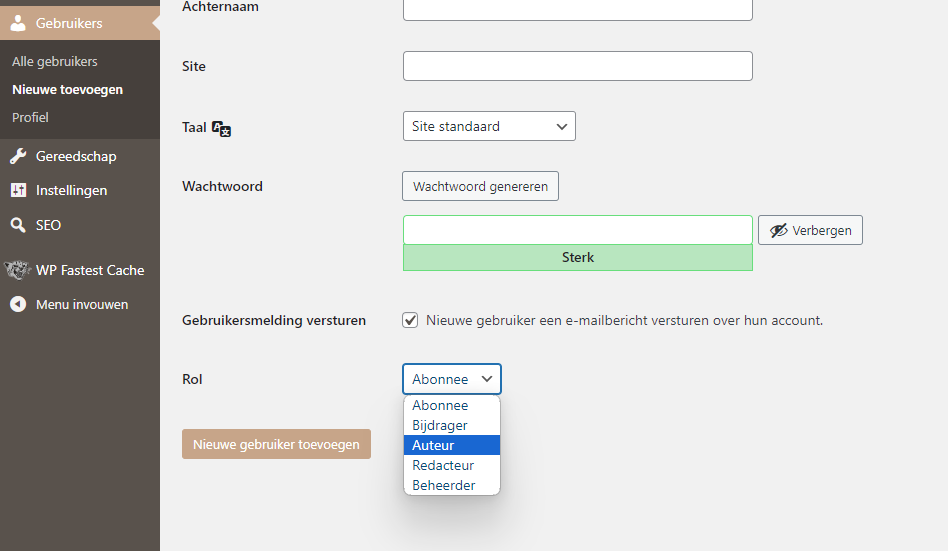Different user accounts in WordPress
WordPress is one of the most popular methods for creating a website to create a website with a content management system because it is easy to use and can be used by anyone who has basic knowledge of using a computer. In your business, you need multiple levels within the roles of your employees. Obviously, an intern should not be able to bring down your entire company by accidentally removing an essential component. Also for permanent employees who, for example, only need to see content, it makes sense to have a it makes sense to set up a separate account for them. In this blog post, take a look at what different accounts you can create. And which ones you can use in your organization.
User accounts allow individuals to log in to your WordPress website and interact with its content. This includes writing posts, posting comments, managing website content, and more. User accounts also allow you to accurately manage user access and permissions.
User types and roles
In WordPress, there are different user types with unique roles and access rights:
- Administrator: has full control over the site, including managing content, users, themes, and plugins.
- Editor: Can publish, edit, and delete posts, as well as manage posts from other authors.
- Author: Can create, edit, and publish own posts.
- Contributor: Can write and submit contributions, but cannot publish. Must be reviewed by an editor or administrator.
- Subscriber: Can only edit their own profile and can receive updates from the site.
The importance of user accounts
User accounts are critical to the collaboration, security, and personalization of your WordPress website. They allow multiple people to contribute to content, while access rights are carefully managed to prevent unauthorized changes and other incidents. They also allow you to better distribute the workload, so you can focus on the tasks that are important to you, and so can your employees or colleagues. This way, everyone can get their work done without perhaps being distracted by things that aren't important to them.
Manage and create user accounts
To create a new user, go to "Users" in the WordPress dashboard and click "Add New". Fill in the required details, assign a role and send an invitation to the new member. This requires SMTP authentication within MijnHostingPartner.nl. If you haven't set this up yet, you should do so first. This can be done with a plugin of your choice. And we recommend that you use a separate email address for this. For example send@. This can then be used exclusively for authentication.
User account security
User account security is very important. Encourage users to use strong passwords, and as always, take the necessary precautions so that you can quickly restore your site with a backup. Also, consider setting up two-factor authentication via a plugin.
Profile settings for users
Each user can personalize their profile with information such as a bio, profile picture, and social media links. This adds a personal touch to posts. And is thus also recommended for the user experience of your visitors. This way, users are more likely to connect with a website or company than if they just see anonymous sources with no author or face associated with them.
User accounts are the backbone of interaction and management in WordPress. Understanding the different user types, roles, and security measures can help you create a secure, collaborative, and engaging online environment for your site. Effective user account management will greatly improve the overall functionality and security of your WordPress website.
